Carly Ryan, Robert Atkins, Rhianna Barreau, Karlie Pearce-Stevenson: Most shocking crimes of SA, Adelaide’s south and beyond
Mass family murders, mystery abductions, perverts and a child found stuffed into a suitcase – here are the worst crimes of the Fleurieu, southern suburbs and beyond.
SA News
Don't miss out on the headlines from SA News. Followed categories will be added to My News.
From missing persons to mass murders, Adelaide’s south and the Fleurieu Peninsula has been home to some of the state’s most gruesome crimes.
Here, we take a look at the worst that sent shockwaves throughout the state.
Robert Atkins, Trevor King and Jeff Mundy
Robert Atkins, 31, was declared missing in January 2021 by his mother after she hadn’t heard from him in more than two months.
She had no idea her son had been handed the reins to an illegal southern-suburbs drug business, but failed to deliver – leading to his eventual torture and subsequent death.
Mr Atkins was forced to commit crimes for his captors, believing he would be freed if he complied.

He was last seen alive on November 15, 2020, and – nearly three years and a dozen major searches later – police recovered what they believed to be his remains from a rainwater tank at an abandoned property in the state’s Mid-North.
The grim discovery was a breakthrough in Task Force Southern, a SAPOL investigation established to probe the murders of Mr Atkins, Jeff Mundy and Trevor King – whose deaths were later all linked.
A court previously heard Mr Atkins was allegedly stripped bare, hog tied and subjected to a “deliberate and systematic series of assaults” in the week before he was killed – allegedly on instructions from accused man Cameron Lachlan Stuart via prison phone calls.
Stuart has not been charged over the men’s deaths and has pleaded guilty to 62 counts of drug trafficking.
He also pleaded guilty to discharging a firearm to injure, frighten or annoy, aggravated threatening to cause harm, aggravated possess a firearm and possess a sound moderator over a shooting in June 2020.
In December 2021, it was revealed the murders – one a faked suicide – of Mr Atkins, Trevor King and Jeff Mundy were all allegedly committed by the same group of offenders with drug debts a key motive.
Police believe Mr King, 41, was lured to a house on February 5, 2019, where he was tortured for up to six hours – beaten, burned with a blow torch, set alight and his hands smashed with a bat.
He owed a $1000 drug debt that spiralled first to $10,000 and then $50,000 when he did not repay it in time.
His body was found at West Lakes in January 2020 and initially treated as a suicide, with a post-mortem determining his death was the result of a drug overdose.

However, in evidence unearthed during Mr Atkins’ investigation, detectives received information Mr King’s suicide was staged and he was given a hotshot of an undisclosed drug before being thrown into the water.
Jeff Mundy, 36, was reported missing by police on Christmas Day in 2020. His last-known location was getting off a bus at Sellicks Beach that year.
He filled a script at a chemist at Colonnades Shopping Centre on December 19 and returned home around 3pm.
At 4pm he was spotted at the Seaford exchange talking to a male unknown by police. At 6.30pm he got off a bus on 143 Alexander Beach at Sellicks Beach but police are unsure where he went after that.
Mr Mundy’s body is believed to have been disposed of somewhere on the Fleurieu Peninsula.
Rhianna Barreau
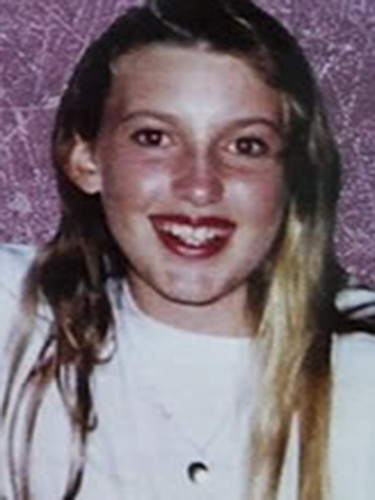
Rhianna Barreau was just 12 years old when she disappeared from her Morphett Vale home in 1992 without a trace, never to be seen again.
It was school holidays, Rhianna was home alone and she had just returned from an outing to the local newsagent to buy her US pen pal a Christmas card.
When Rhianna’s mother Paula Barreau got home, the house was locked, the TV was on and there were records on the floor that Rhianna had been playing.
The Christmas card she purchased from the newsagent at 11.19am was still in its wrapper sitting on the dining table, indicating she had returned home from her short walk.
There were no signs of a struggle, and only her keys were missing.
Former homicide detective – and one of the first police officers to attend the home – Allen Arthur said police explored three possibilities: Rhianna left again and something happened, she was lured outside by someone she trusted, or a stranger saw her walking alone and followed her home and made up a story to get her outside.
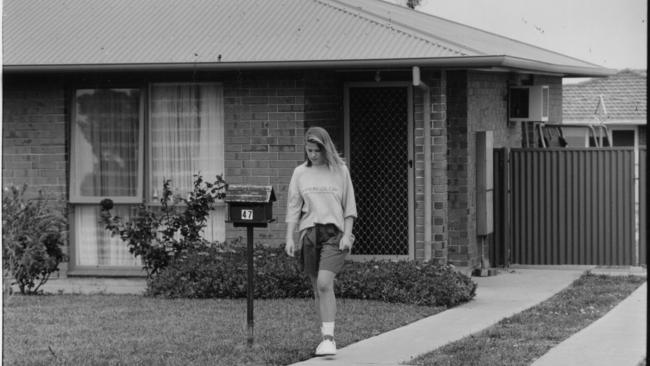
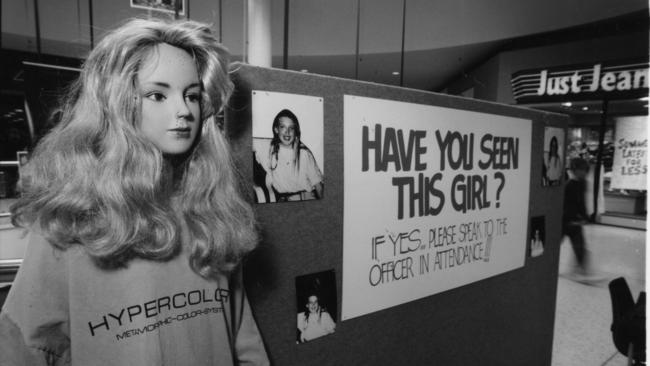
Police had two major leads, but both went nowhere. A white Holden Torana with Victorian plates was seen parked near Rhianna’s house, but a nationwide search failed to find it or the owner; while someone had called police from a payphone to say they found a set of keys like Rhianna’s on a driveway – but after ringing police he returned to the driveway and they were gone.
More than 30 years later, Rhianna is still missing. There is a reward of up to $1m for information.
Hope Forest Massacre
Before Port Arthur, South Australia’s Hope Forest Massacre was the country’s worst mass killing – and to this day remains one of our state’s most horrific crimes.
In 1971, a family was torn apart after father of seven Clifford Cecil Bartholomew, then 40, snapped in a fit of jealousy, paranoia and schizophrenia – writing the “screaming noises that was splitting my head wide open” just hours before he murdered ten of his family members in cold blood.
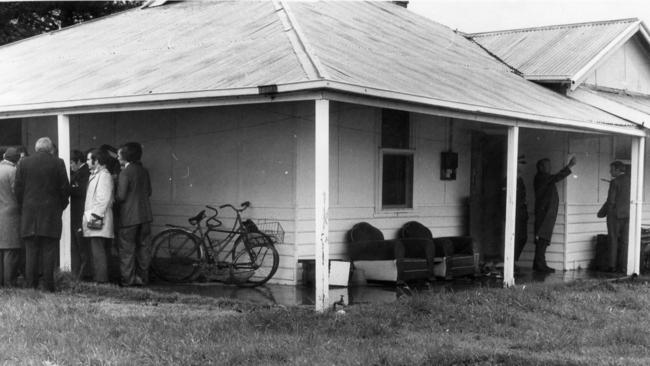
Acting on the suspicion his wife Heather, 40, was having an affair with a Vietnam soldier staying at their farmhouse near Willunga, Bartholomew had supposedly intercepted a letter from the soldier to his wife and stormed out of the house during a Father’s Day dinner – returning later that night with two rifles and a rubber mallet.
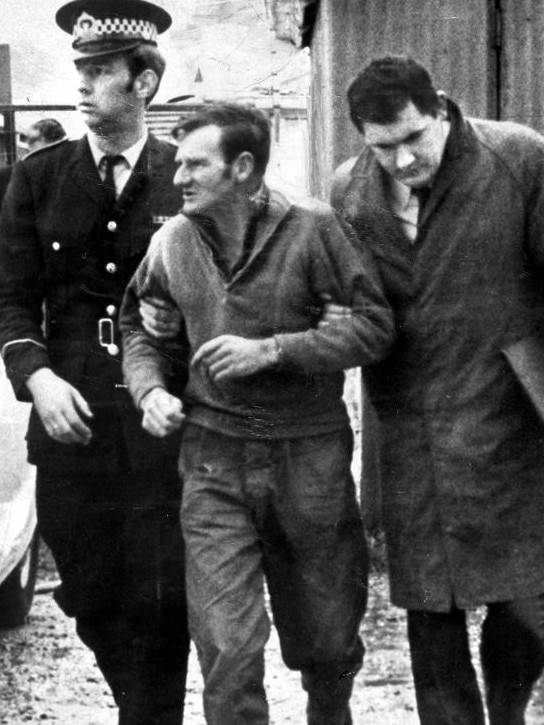

He walked into the house and hit his wife with the mallet, before shooting her dead. Police later determined no affair had ever taken place.
Heather’s corpse lay in her bed, covered in blood. Her face was smashed in and she had a single bullet wound to the head from a .22 calibre rifle fired at point-blank range.
Lying in a small camp bed next to her was the couple’s youngest child, four-year-old Sandra, who appeared at peace, with a hand resting on her teddy bear. Less than eight hours earlier, Sandra had hugged and kissed her father and told him “I love you, Pa, when are you coming home?”.
Bartholomew systematically shot his family as they were each awakened by the noise – his sister-in-law, his seven children ranging in age from four to 19, and nephew.


He then sat down and had a drink at the kitchen table, before remembering his nephew – a toddler – was still sleeping in his cot.
So, he reloaded his rifle, walked calmly down the hall, and shot the 18-month-old through the head at point-blank range.
The baby, Daniel, died blissfully unaware of the horror that transpired just 25 minutes earlier.
Bartholomew was sentenced to death but this was commuted to life in jail. He was released after just eight years and given a new identity.
In 2018, The Advertiser reported he moved to Queensland, where he raised another family of seven who never knew of his shocking past and died in 2002.
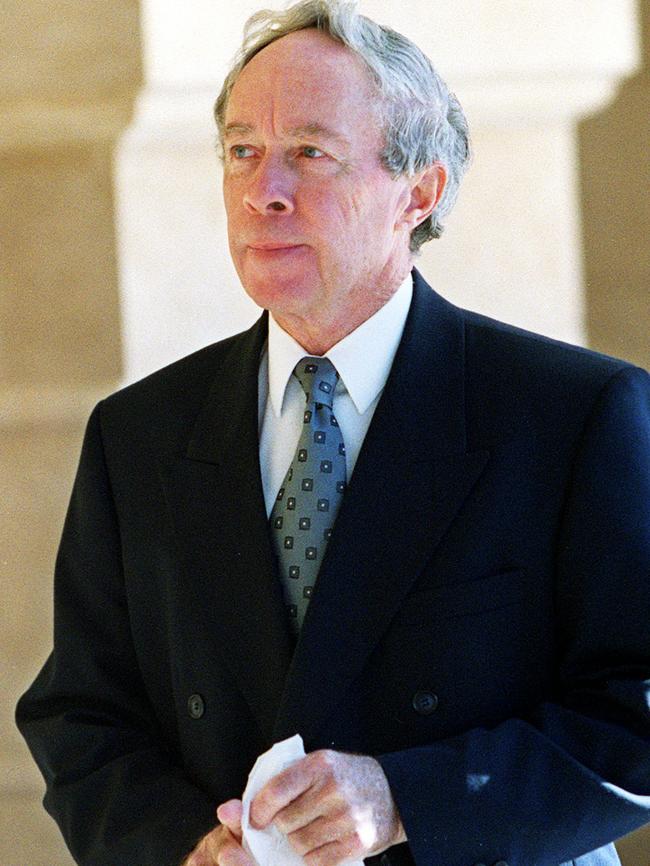
Peter Liddy
Peter Liddy once upheld the law – dishing out punishments and deterrents to offenders as a magistrate in Adelaide’s south – but, in 2001, he found himself on the other side of the fence facing 10 counts of child sex offences.
Liddy continually abused multiple children at the Brighton Surf Lifesaving Club across the 1980s.
He was convicted of five counts of unlawful sexual intercourse with a child under 12, four counts of indecent assault and one count of attempting to bribe one of his victims into not giving evidence.
He was handed a 25-year jail sentence – a record at the time.
Other alleged victims have come forward since, with a push in 2010 for Liddy to face another 10 child sex charges.
Those charges – for alleged offences between 1969 and 1983 – were ultimately thrown out due to the length of time since they allegedly occurred and concern over the ability for a fair trial.
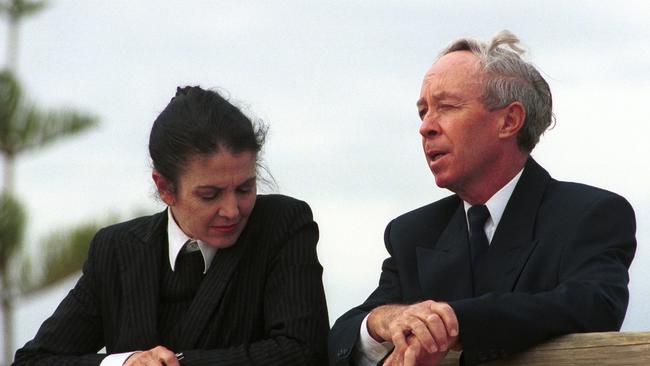
In 2010, the Advertiser revealed Liddy forensically studied cases of child sex abuse while perpetrating his deviant acts against young boys – writing an extensive report for a criminological journal detailing his findings.
The study involved the detailed examination of 60 men who had been convicted of 124 child-sex offences against 94 boys over a five-year period – and what the sexual activity involved.
Liddy examined where the sex occurred, finding that most took place at the offenders’ homes. Liddy also gathered information on the age, marital status, place of birth, occupation, education and criminal history of each of the pedophiles.
He studied their relationships with their victims, with a particular focus on the ages of the children and how they were groomed for sex, with some allegedly being “willing” participants.
Liddy, who sexually abused nippers from the Brighton surf club, warned parents to be wary of youth groups and social clubs because some children “are more susceptible to affection offered by an adult in the group”, he wrote in the report.
The former magistrate will complete his sentence in 2026 – when he will be 81.
Vonne McGlynn
Mother-of-two Angelika Gavare ambushed and murdered her neighbour Vonne McGlynn in 2008, dismembering her so brutally that police could identify the pensioner only by the serial number on her artificial hip.
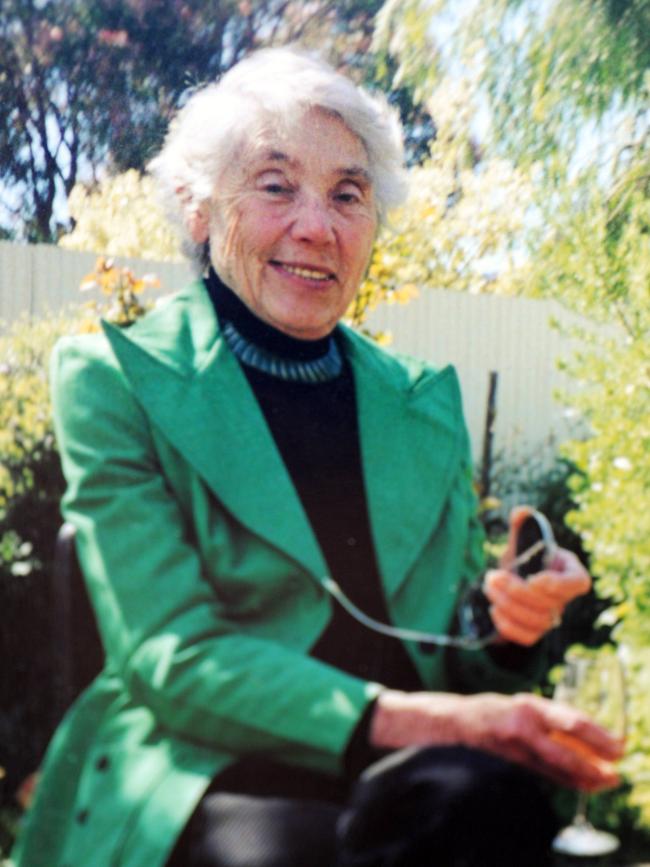
Sixteen years later, 82-year-old Ms McGlynn’s head and hands have never been recovered.
Prosecutors alleged Gavare used a child’s stroller to dump pieces of Ms McGlynn’s corpse in a suburban creek, simply because she wanted her house.
The Latvian immigrant thought she could make a better life for herself and her daughters by selling Ms McGlynn’s Reynella home and keeping the profits.
After trying and failing to win Ms McGlynn’s trust, Gavare resorted to brute force – breaking into her southern suburbs property and killing her with her own statue.
She then assumed her identity – via paperwork – to siphon her bank accounts, cancel her deliveries and pretend Ms McGlynn was on holiday before getting to work on the renovations.

Police investigating Ms McGlynn’s disappearance smelled rotting flesh while searching Gavare’s home after she was interviewed because she had tried to use the pensioner’s bank card to withdraw cash. However, despite a thorough search of the outdoor shed, nothing could be found.
Not long after though – having identified the body parts in a nearby creek – investigating police checked the neighbourhood and found Ms McGlynn’s hall table and toaster oven in Gavare’s home.
Caught out, Gavare tried to blame her boyfriend and her ex-husband for her crime, which prompted her own mother to give evidence against her at trial.
In court, Gavare’s mother Inara Dombrovska testified against her, saying she confessed to the murder at a Christmas celebration that same year.
Becoming progressively more unhinged, Gavare sat in court watching her interview with police and laughed at the jokes she had cracked to officers.
Gavare was sentenced to at least 32 years behind bars in 2011, the longest sentence imposed on a woman in SA.
Carly Ryan
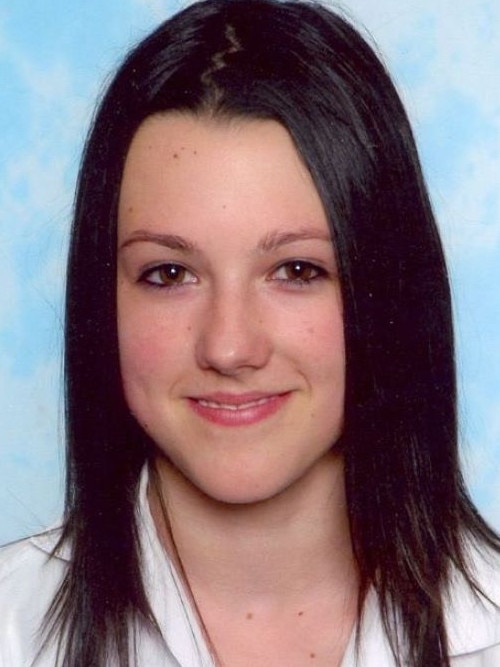
Fifteen-year-old Carly Ryan’s death was the first of its kind not only in Australia, but in the world – the first time an internet predator reached out and killed his victim.
Carly was groomed by Garry Newman – a 50-year-old, divorced father of three who lived with his mother acting under the identity of Brandon Kane – a 20-year-old, Texas-born, Victorian-raised emo, who played guitar and thought Carly was “hot’’.
Carly also began to communicate with Brandon’s “adopted father’’, Shane, and their chats made her friends extremely uncomfortable.
With her 15th birthday party planned for January 26, 2007, Carly invited “Brandon” to attend – an offer he declined but one he offered to have “Shane” go in his place.
Carly’s mother was, of course, sceptical – but was assured by her daughter that the man was “Brandon’s” dad, a security guard.
The man who arrived at the Ryan house in January 2007 was not “Shane”, the SAS commando who had worked as a bodyguard for goth rocker Marilyn Manson. He was, in truth, Garry Francis Newman.

“Shane’’ was but one of 200 fake identities operated by Newman, who used web design jobs to cover up his plethora of constructs.
He was convinced the girl would accept him in place of the Brandon fantasy, but Newman received a less-than-warm reception on his arrival – Carly finding him “gross” according to her mother.
After they met in person at her 15th birthday party – and she rejected him – he later used his “internet construct” under the “Brandon” alias yet again to lure her to a final meeting at Port Elliot – accompanied by his real-life 17-year-old son who had spent most of his life in foster care.
The next morning, Carly’s bashed, sand-choked and drowned body was found by passers-by at Horseshoe Bay.
At trial, forensic experts said Miss Ryan had swallowed almost a cup of sand before she was thrown into the water, where she drowned.
Newman was sentenced to the minimum 29-year prison term on March 1, 2010. His son was acquitted by the jury.
Carly’s death
Beaumont Children
By South Australia’s most infamous cold cases, the disappearance of the Beaumont children remains one of the nation’s biggest mysteries – and will long serve as any parent’s biggest nightmare.

Fifty-eight years ago, on a 38C Australia Day in 1966, Jane, Grant and Arnna Beaumont said goodbye to their mother Nancy and boarded a bus to Glenelg like they had many times before – although this time, they would never see their mum again.
It remains arguably Australia’s greatest mystery.
Jane, 9, Arnna, 7, and Grant, 4, were last seen in the company of a blond man in dark blue swimming trunks on January 26.
The children were said to be comfortable around the man, jumping over him as he lay on the grass while Jane playfully hit him with a towel.
An elderly couple told police they were approached by the man who asked whether they had seen anyone touching their discarded clothes because they were missing some money.
One of the final sightings of the children was at Wenzel’s cake shop, where the children purchased pasties, a meat pie and drinks using a £1 note.
The children had left the house with eight shillings and sixpence in coins as bus fare and to buy pasties for themselves and their mother on the way home.
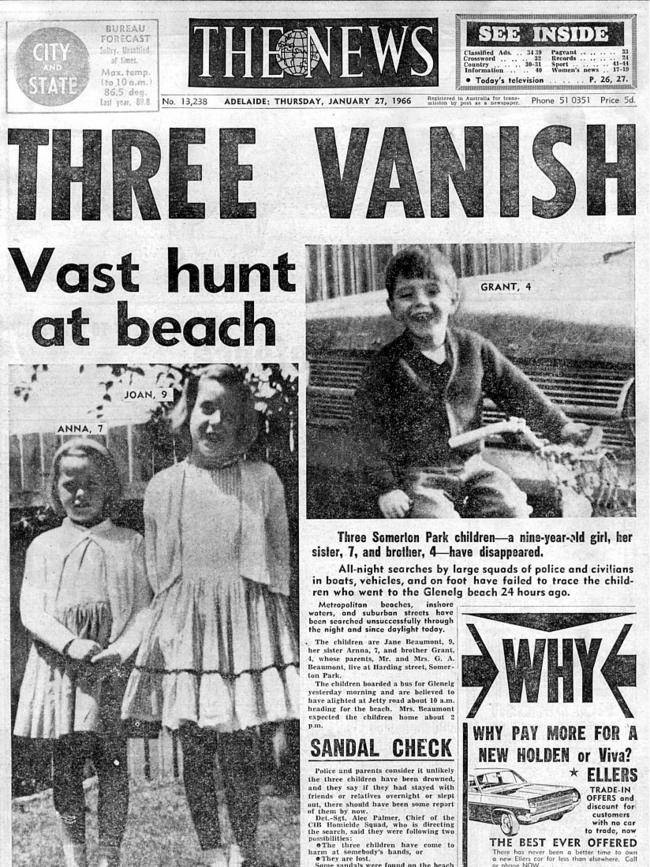

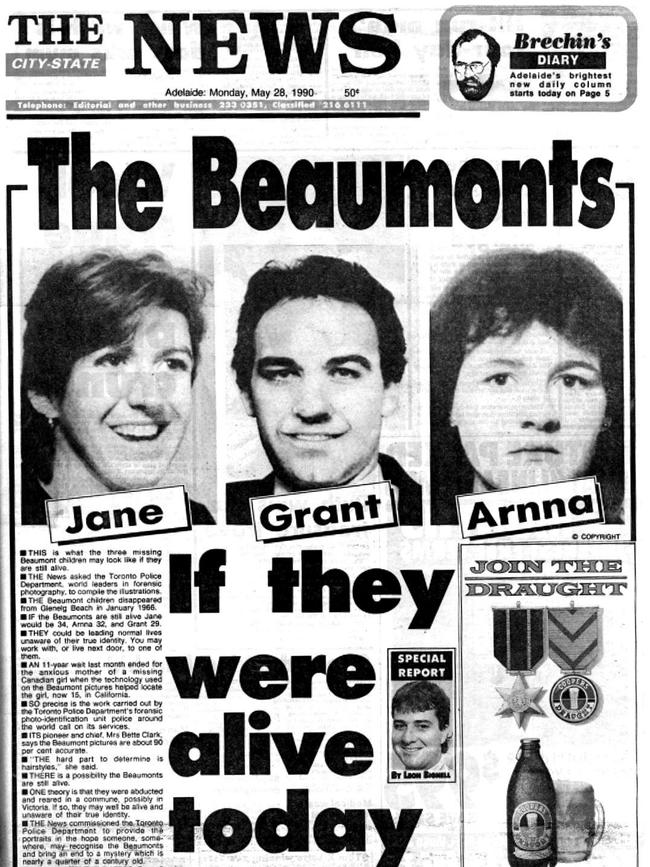

The final confirmed sighting came at 12.15pm as the children waited on a seat at the nearby Colley Reserve change rooms.
There have been many unproven claims made about the children.
A psychic named Gerard Croiset even predicted the children were buried under a warehouse however that was proved wrong.
In 2013 and again in 2018, police conducted a dig at the New Castalloy factory in North Plympton in the hope of finding the children’s bones, with nothing found.
In 2013, two men told police that they had been asked to dig a large hole at the Castalloy factory at the behest of businessman Harry Phipps, only days after the children disappeared.
Convicted murderer Bevan Spencer von Einem was accused of killing the Beaumont children, among others, by a witness, named Mr B, in his trial for the murder of Alan Arthur Barnes.
Mr B claimed von Einem had told him he had taken the three Beaumont children in 1966 and performed “brilliant surgery” and “connected them together” but one of the children had died and at least one body had been later dumped at Moana or Myponga south of Adelaide. However, Mr B’s claims had no evidence.
A reward of up to $1m is offered for information that leads to a conviction in the case or recovery of the children’s remains.
Roman Heinze

Roman Heinze was a twice-married father-of-five who responded to a Gumtree ad posted by a Brazilian woman, agreeing to take her and a German companion to Melbourne in 2016.
However, at a stopover in Salt Creek, along the remote Coorong, he attacked the Brazilian from behind, tied her up with pre-cut lengths of rope, sliced off her bikini with a knife and sexually assaulted her.
When the German tried to come to her companion’s aid, Heinze repeatedly struck her in the head with a hammer and ran her down with his 4WD.
Following his arrest, police found condoms, a box of Viagra and a bottle of Passion Pop in his vehicle.
During his trial, a court heard Heinz kept hardcore bondage-style rape pornography on his phone and viewed it on the day he offered to take the two tourists.
In 2017, he was jailed for 22 years, with a judge declaring him an inhuman, primitive, sex-obsessed predator who would continue to pose a danger to young women.
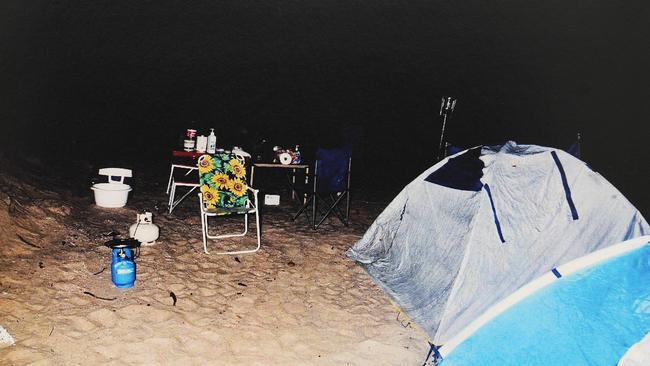

In September, Heinze dropped defamation action against his daughter claiming she had defamed him by speaking publicly about his February 2016 crimes.
Karlie Pearce-Stevenson & Khandalyce Pearce

Karlie Pearce-Stevenson, 20, and her two-year-old daughter Khandalyce were travelling around South Australia when they went missing in late 2008, before they were brutally killed and callously disposed of more than 1100km apart.
The toddler’s remains were found inside a grey Lanza suitcase dumped by the side of the road at Wynarka – in the state’s Murray Mallee – in July 2015 – seven years after she was first reported missing.
A range of items were also found inside the suitcase including a black tutu, Dora the Explorer shirt and a pink booty with an embroidered butterfly on it.
Her mother Karlie’s skeletal remains were found in Belanglo State Forest in August 2010. Police believed she was murdered in NSW in December 2008, and the killer possibly used Belanglo as their burial ground in a crude effort to deflect blame on to serial killer Ivan Milat, who used the state forest as his killing fields when murdering at least seven backpackers.
In 2018, convicted sex offender Daniel James Holdom pleaded guilty to the murder of Karlie and Khandalyce – with a court hearing the middle-aged killer had been in a short relationship with his victim in 2008.
While the couple was staying at Holdom’s relative’s house in Canberra’s northern suburbs, he lured Ms Pearce-Stevenson to Belanglo State Forest in NSW’s Southern Highlands on December 14, 2008.

Court documents show Holdom stepped on the 20-year-old mother’s throat and crushed her windpipe before leaving her body in the forest.
He also took photographs of her body. Those graphic images were found by a woman known to Holdom on an SD card years later.
On December 19, 2008, he left Charnwood in Canberra with Khandalyce and claimed he was travelling to South Australia to drop her at her grandmother’s house.
Instead, he drove to Narrandera, near Wagga Wagga, and checked into a motel with the blonde-haired toddler, affectionately known to family and friends as Khandles.
According to the Crown case statement tendered in court, Holdom killed the little girl before putting her body in a suitcase.
He drove towards South Australia, where he dumped the suitcase on the side of a desolate highway near Wynarka in the rural Murray Mallee Region.
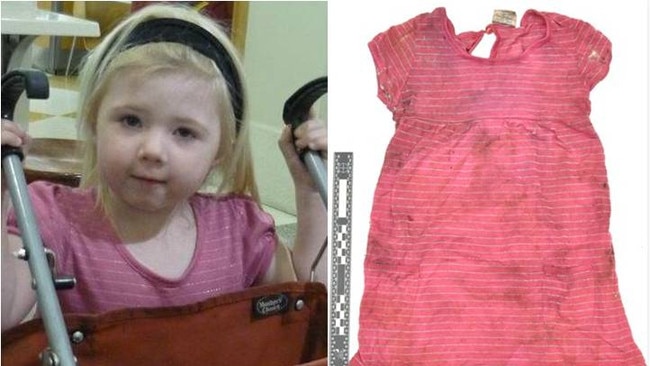
Seven years later, in July, 2015, a passing motorist found the suitcase by chance. He noticed a small jaw bone among a pile of tattered clothing and called police.
In October, 2015, someone called Crime Stoppers claiming they had a photograph of a little girl named Khandalyce with the same distinctive quilt that was found in the suitcase.
In 2018, Holdom was sentenced to life in prison.
More Coverage
Originally published as Carly Ryan, Robert Atkins, Rhianna Barreau, Karlie Pearce-Stevenson: Most shocking crimes of SA, Adelaide’s south and beyond





